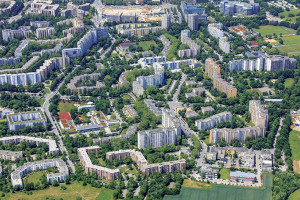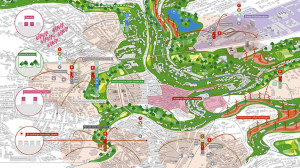ENERGY-SUSTAINABLE NEIGHBORHOODS: COMPARING DESIGN STRATEGIES
Pascal Federico Cassaro
The European Green Deal ratifies the beginning of the race toward energy efficient cities, defined as net zero energy, that will create new forms of sustainable and resilient dwelling. Our cities are where it is most necessary to establish strategies of action and measures of intervention. At the same time, they become a privileged field of research and experimentation for defining a truly effective response to these problems. Despite the fact that the majority of urban policies claim to be concretely committed to planning more resilient cities, it is not yet clear whether the approaches being pursued, characterised by strategies of partial, sector-specific intervention, divided by scale and discipline, are truly effective. There is mounting evidence that what is required is a more systemic and integrated approach to action in order to reach a level of environmental and energy awareness congruous with the objectives established by global organisations. This is the context in which we find diverse design strategies and actions developed recently, both relative to new projects for the recovery and adaptive reuse of the existing: from the development of the idea of the “Eco-Quarter”, to the energy efficient refurbishment of interstitial spaces and spaces of proximity, to operations that combine energy requalification with the search for a growing functional and social mix.






